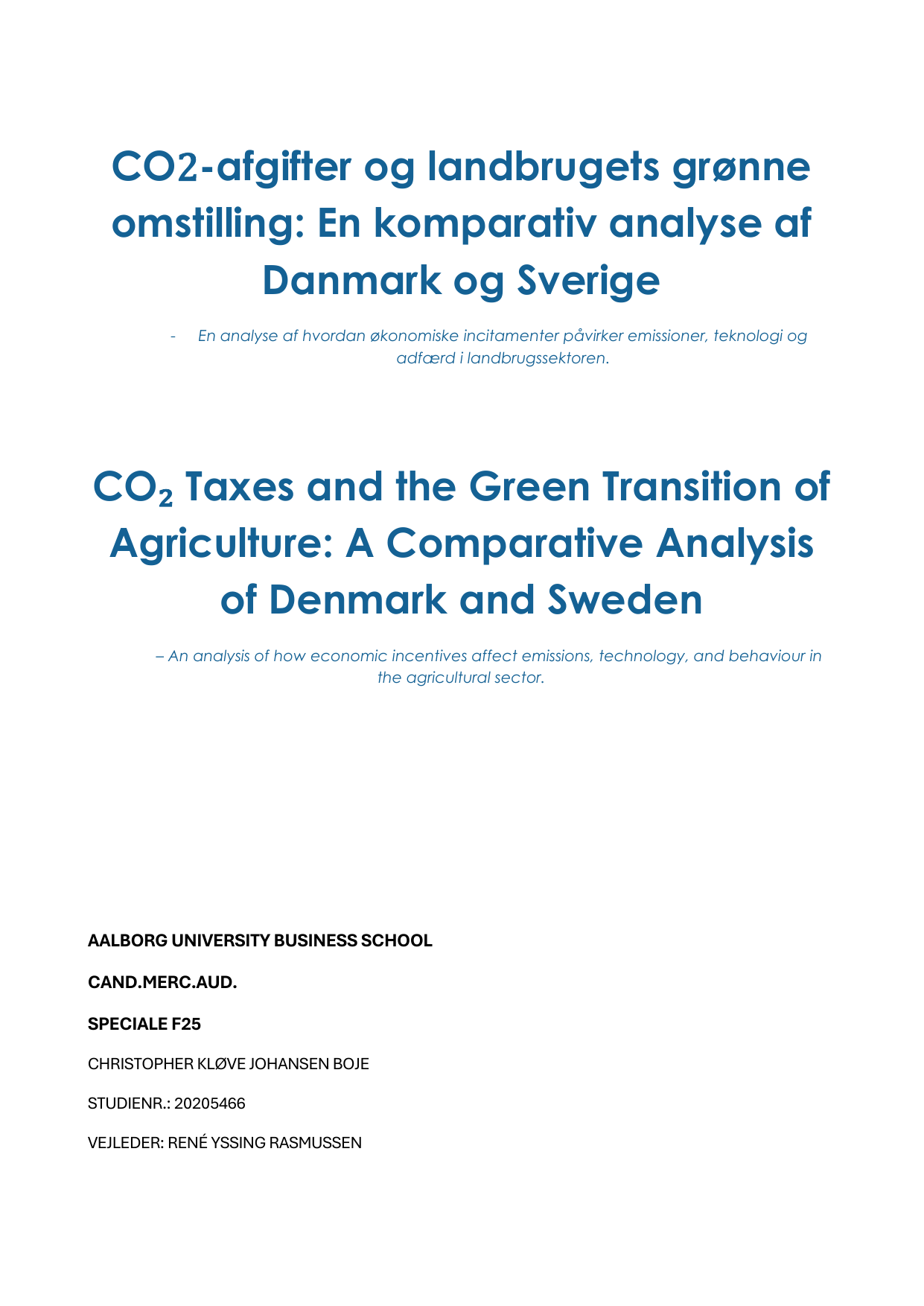
CO2-afgifter og landbrugets grønne omstilling: En komparativ analyse af Danmark og Sverige: - En analyse af hvordan økonomiske incitamenter påvirker emissioner, teknologi og adfærd i landbrugssektoren
Oversat titel
CO2 Taxes and the Green Transition of Agriculture: A Comparative Analysis of Denmark and Sweden: – An analysis of how economic incentives affect emissions, technology, and behaviour in the agricultural sector.
Forfatter
Semester
6. semester
Uddannelse
Udgivelsesår
2025
Afleveret
2025-11-04
Antal sider
55
Abstract
The purpose of this paper is to examine the effects of CO2 taxation on greenhouse gas emissions in agriculture. The paper focuses on a comparative analysis between Denmark and Sweden and looks at the change over the period 1990 to 2025. The paper explores how economic instruments, with a particular focus on how Pigouvian taxes, influence emission reductions, effect technological development, and behavioral change in the agricultural sector. By drawing on theories about environmental economics, the analysis attempts to investigate whether CO2-equivalent pricing mechanisms can effectively internalize, externalities and thereby have contributed to a more sustainable agricultural structure. The methodology used in this paper is a comparative case study design that combines both quantitative and qualitative approaches. The quantitative data used in this paper is from national inventories, which provide the empirical basis for assessing emission trends. The qualitative policy analysis explores the institutional and political frameworks shaping the tax implementation. The findings reveal significant divergence between the two countries, despite the apparent similarities. Of the two countries, Sweden was the first to introduce a comprehensive CO2 tax and is to this day among the countries with the highest CO2 tax. Sweden’s CO2 tax is consistent and predictable pricing mechanism, which has led to a substantial reduction in emissions – approximately 25% in agriculture since 1990 – which has incentivized the uptake in ´bioenergy, biogas and improved energy efficiency. In contrast, Denmark’s approach has been more fragmented and led to politically negotiated agreements which largely rely on voluntary participation, subsidies and regulatory measures. As a result of this, the Danish agricultural sector has achieved a smaller reduction, compared to Sweden, of 15-20% in the same period, which is primarily driven by structural change rather than direct price incentives. The conclusion reached in this thesis is as follows, CO2 taxes can be an effective instrument for reducing agricultural emissions, however their success depends on three core factors: (1) the tax’s design and coverage, (2) its interaction with technology and innovation policy, and (3) institutional and political stability. The model used in Sweden demonstrates closer alignment with Pigouvian principles and therefore it offers valuable lessons for Denmark as it moves towards implementing a comprehensive agricultural carbon tax from 2026 onwards.
